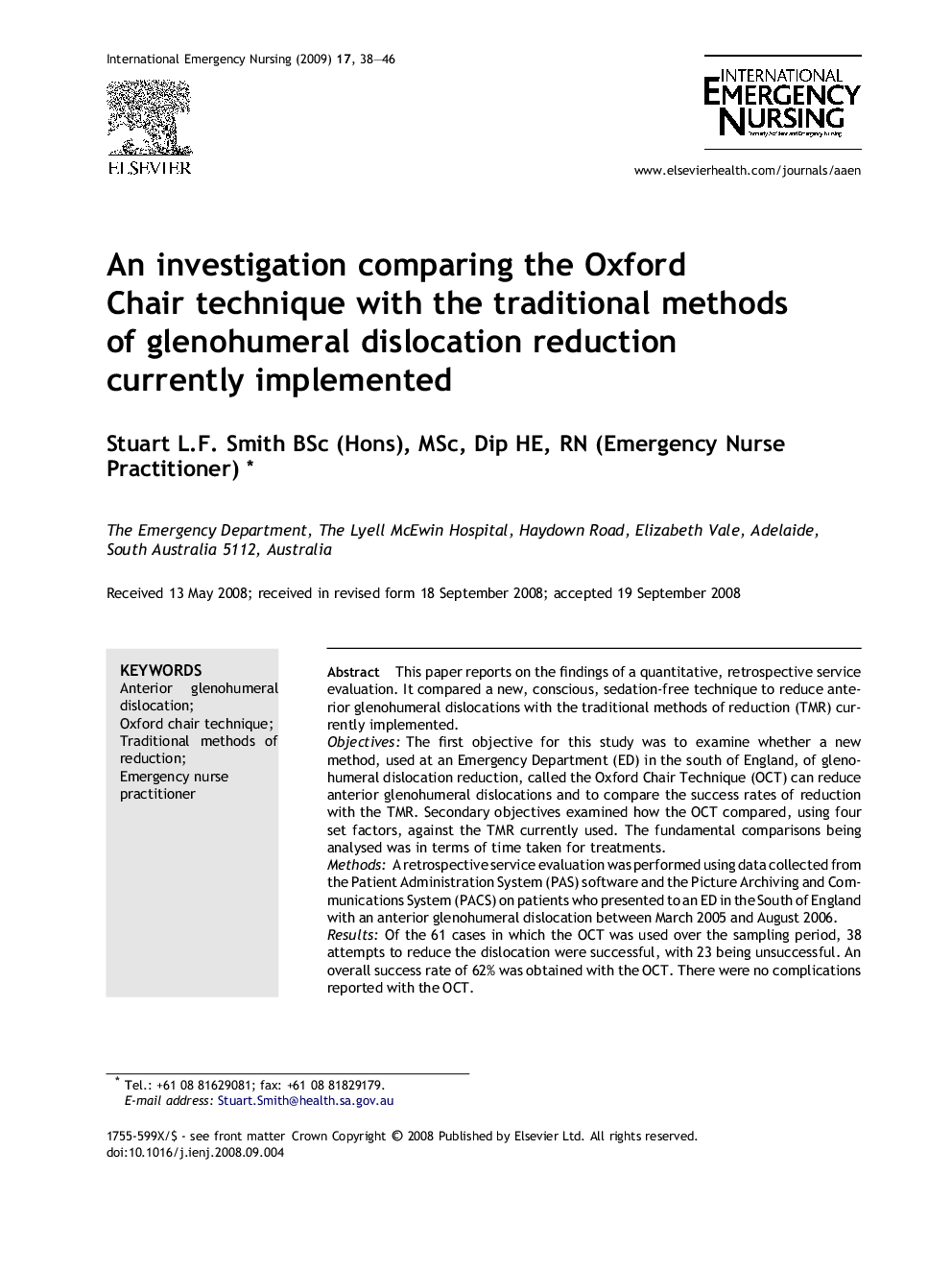| Article ID | Journal | Published Year | Pages | File Type |
|---|---|---|---|---|
| 2609311 | International Emergency Nursing | 2009 | 9 Pages |
This paper reports on the findings of a quantitative, retrospective service evaluation. It compared a new, conscious, sedation-free technique to reduce anterior glenohumeral dislocations with the traditional methods of reduction (TMR) currently implemented.ObjectivesThe first objective for this study was to examine whether a new method, used at an Emergency Department (ED) in the south of England, of glenohumeral dislocation reduction, called the Oxford Chair Technique (OCT) can reduce anterior glenohumeral dislocations and to compare the success rates of reduction with the TMR. Secondary objectives examined how the OCT compared, using four set factors, against the TMR currently used. The fundamental comparisons being analysed was in terms of time taken for treatments.MethodsA retrospective service evaluation was performed using data collected from the Patient Administration System (PAS) software and the Picture Archiving and Communications System (PACS) on patients who presented to an ED in the South of England with an anterior glenohumeral dislocation between March 2005 and August 2006.ResultsOf the 61 cases in which the OCT was used over the sampling period, 38 attempts to reduce the dislocation were successful, with 23 being unsuccessful. An overall success rate of 62% was obtained with the OCT. There were no complications reported with the OCT.Statistically significant differences were found with the mean time from arrival to discharge (OCT 141 v. TMR 254 min, p < 0.001); mean time between the first diagnostic X-ray and post reduction X-ray (OCT 70 v. TMR 102 min, p < 0.003) and the mean time between the post reduction X-ray and discharge (OCT 51 v. TMR 119 min, p < 0.001).No patients treated with the OCT required conscious sedation compared to 90% of patients treated with TMR (p < 0.001). Only 38% of patients treated with the OCT had morphine administered compared to 90% of patients treated with TMR (p < 0.001).ConclusionsOverall, the success rate for reduction using the OCT was good in view of this being a new treatment to the ED. While the OCT had a lower success rate of reduction compared to TMR, when reduction was successful using the OCT, there were overwhelming time-saving benefits to the patient with subsequent logistical benefits to the ED. The use of conscious sedation and morphine was also significantly less for the OCT group compared to TMR.
